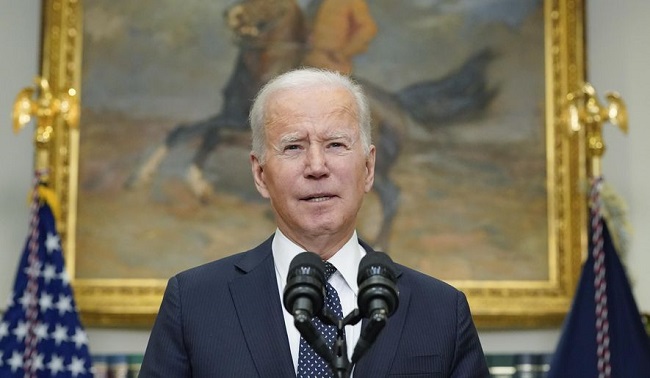Do you have a USB (Universal Serial Bus) device that your computer won’t recognise? Don’t be concerned; you are not alone. The identical USB Device Descriptor Request Failed error has been reported by a number of users.
The issue is caused by Windows failing to recognise your USB (Universal Serial Bus) device. When SD cards are added, Windows does not always recognise them.

How to Resolve the Error USB Device Descriptor Request Failed
When you plug your USB device into your computer and receive an error notice that says USB Device Descriptor Request Failed or the device stops working, we have 5 fast fixes for you.
Examine the five solutions that will help you solve the USB Device Descriptor Request Failed error. It goes without saying that the error can arise for a variety of causes.
As a result, it’s best if you try the methods that are most appropriate for your condition.
Read Also:
Method 1: Disconnect the Power Supply
When your USB is not readable by Windows, it could be due to a power supply issue. So, first check your Power Supply and see whether the USB Device Descriptor Request Failed problem has been resolved.
Step 1: Unplug the Power Supply cord from your laptop.
Step 2: Restart your computer and insert the USB device into the USB port.
Step 3: Reconnect the power supply, and the device should now function properly.
If the device still won’t recognise the USB, try restarting your computer and connecting to USB without the power source.
Method 2: In Device Manager, Uninstall the Relevant USB Driver
The best solution to solve the problem without exerting any effort is to uninstall the USB device that is creating the issue.
And, as you may be aware, Windows has the ability to install the essential drivers on its own. If uninstalling doesn’t work, move on to the next step.
Step 1: To open the run command, press Windows key + R.
Step 2: In the search box, type devmgmt.msc.
Step 3: In the Device Manager box that appears, look for Universal Serial Bus Controllers.
Step 4: Double-click it and search for a damaged USB device.
Step 5: Once you’ve located the corrupted USB device, right-click it and choose Uninstall.
Step 6: Restart your computer after successfully uninstalling the corrupted USB device.
Windows has the excellent capability of automatically installing device drivers.
Method 3: Install a New USB Driver
Step 1: To open the run command, press Windows key + R.
Step 2: In the search box, type devmgmt.msc.
Step 3: A window called Device Manager will appear. Then extend your search for Universal Serial Bus Controllers.
Step 4: Right-click on Unknown USB Device (Device Descriptor Failure) to open it.
Step 5: Next, select Update Driver.
Step 6: Select the option to search automatically for updated driver software and click it. The most recent driver versions will now be installed by Windows.
Step 7: Turn on your computer again.
Method 4: Turn off the Fast Startup Feature
The external USB device is not detected during rapid booting. The Device Descriptor Request Failed Error is the result of this. To repair your problem, disable Fast boot.
Step 1: To open the run command, press Windows key + R.
Step 2: In the search box, type Control Panel.
Step 3: In the Control Panel window, look for Power Options.
Step 4: Select the option “Choose what the power buttons do” from the left panel.
Step 5: Now you may select “Change settings that are presently unavailable” from the drop-down menu.
Step 6: Scroll to the bottom of the page to find the Shutdown settings. Uncheck the “Turn on rapid startup (recommended)” option at the start of the programme. Hit Save changes to save the following changes.
Step 7: Restart your computer at this point. Fixing the USB Device Descriptor Request Failed issue The problem with the failed error will be resolved. If the problem remains unsolved, move on to the next step.
Method 5: Change the USB Selective Suspend Settings
Our system is maintained by computers, which suspend some of the bus routes that are now inactive. This conserves power by reserving CPU clock cycles.
It forgets to activate the suspended USB device during the suspension phase, resulting in the USB Device Descriptor Request Failed Error. To correct the error, follow these procedures.
Step 1: To open the run command, press Windows key + R.
Step 2: In the search box, type Control Panel.
Step 3: In the Control Panel window, look for Power Options.
Step 4: Finally, select Show more plans.
Step 5: Now choose one of the Change plan settings choices that are presently unavailable.
Step 6: A High-Performance option will be available. “Change plan settings” will display beside it. Select it by clicking on it.
Step 7: Choose the option to Change advanced power settings.
Step 8: Double-click on USB after searching for it.
Step 9: The USB selective suspend option will appear; right-click on it and choose Disable.
Step 10: Click the Apply button, and the changes will be implemented. The USB Device Descriptor Request Failed Error will be resolved if you restart your computer now.
Read Also:
Conclusion
The Device Descriptor Request Failed problem can be fixed using any of the five ways listed above. The mistake is common and can be fixed in a matter of minutes.
After you’ve fixed the issue, you can connect your USB device to your computer, and Windows will almost certainly recognise it without error.


















































